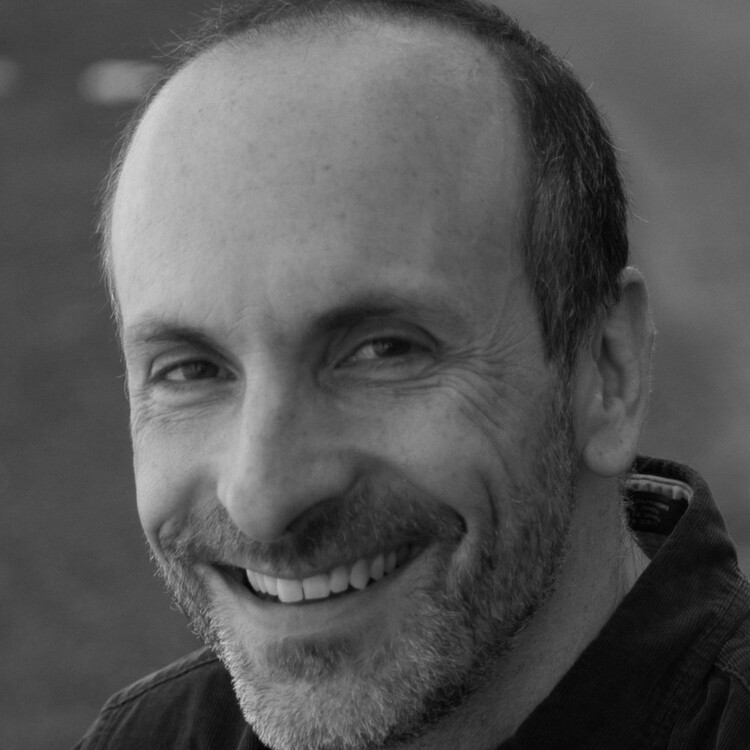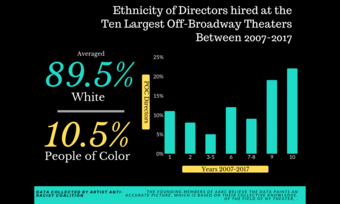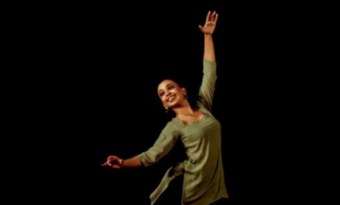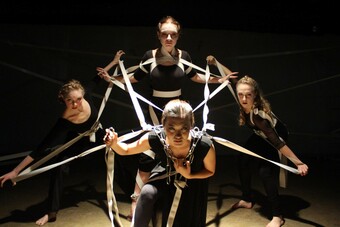Thoughts on Directing a Solo Show
What makes solo theatre unique? How might artists approach and create a solo play? And how might we get audiences to embrace this form? In this series on solo theatre, Scott Wesley Slavin asked six highly accomplished solo theatre practitioners to share their wisdom from working around the world on one-person shows.
[caption]
Director Seth Barrish—photo by Jeremy Folmer[/caption]I’m often asked, “Is directing a solo show different than directing regular plays?” And I’m tempted to say something snarky like, “Yes, when you direct a solo show you work with one person and when you direct other types of plays you work with a bunch of people.” But, in fairness, I think there’s more to it than that.
When you direct a solo show, as you would with any play, you attempt to tell a story the best way you can—you try to make it compelling, entertaining, meaningful, impactful, moving. You apply the same skill sets you’ve amassed over the years to make sure the piece is staged well and the performance feels spontaneous, alive, and authentic. But with a solo show the director plays a much stronger role in the development of the piece as a dramaturg, editor, acting coach, advisor, sometimes therapist and general liaison between the audience and the writer/performer. I’m going to break down my process of working on solo shows as best as I can.
The first thing I do is go over the story structure with the writer. I look at the beginning of the show to see if there’s a “hook”—some people call this an “inciting event.” A good hook grabs the audience’s attention and gives them a sense that something significant is going to happen. I also make sure the piece has a compelling “main event”—a climactic occurrence at the end of the story. This main event, or climax, serves as the target. In a sense, the whole show is a setup for this event. A great climax makes the piece worthwhile. Conversely, a main event that’s just so-so can be highly problematic. Wimpy climax? Wimpy story.
With a solo show the director plays a much stronger role in the development of the piece as a dramaturg, editor, acting coach, advisor, sometimes therapist and general liaison between the audience and the writer/performer.
After looking at the overall structure, I zero in on the little stories that are told along the way. I work with the writer to make sure each little story has its own mini main event. Strung together, these mini main events lead up to the climax of the larger story. They comprise the building blocks of the narrative.
With the story structure intact I move on to the next phase of development—something I call “mirroring”—where I serve as a mirror for the writer. They perform sections of their piece for me and I mirror back what I’m getting from the writing. I basically outline the experience. For example, one of the solo shows I directed was Mike Birbiglia’s My Girlfriend’s Boyfriend. At one point in the show Mike tells the audience about an incident at a carnival ride when he tries to get his first kiss. He describes how he desperately wants to impress this girl, so he takes her to a carnival. At the carnival he eats a bunch of junk food and then climbs aboard a ride called, “The Scrambler.” He gets sick and tries to get The Scrambler operator to stop the ride. He does not succeed and ends up throwing up all over his date.
When Mike first told me the story I laughed hysterically. I told him, “Here’s what I get from that: You were desperate to get your first kiss. You took this girl to a carnival. Along the way you ate a bunch of cotton candy, popcorn, and peanuts. You took her on a ride called The Scrambler. You got scrambled. You tried to get the operator to stop the ride to no avail and you threw up all over the girl. I also get that your first attempted kiss was a disaster and you were humiliated beyond belief. And I get that you were shy and not exactly a smooth operator.” I asked Mike if that’s what he intended to get across. It was. I asked Mike what he wanted to accomplish in that section of the show—to get across why he is really uncomfortable with first kisses. Perfect. Now that we knew the story was clear and served its function well, we could, with great confidence, put it in the show. Incidentally, The Scrambler story has a clear main event—Mike throws up!
As the developmental process continues, I flag any redundancies. Repetition can make a story feel like it’s spinning its wheels.
I look out for anything that’s predictable. I have found there is a direct correlation between surprise and impact. The greater the surprise, the greater the impact. If the audience gets ahead of the story and sees what’s coming before it happens, they tend to check out (space out, snooze, wander). Like when someone tells you a joke and you figure out the punch line long before they get to it.
If I’m confused about something in the story—a line or a series of lines—I’ll tell the performer that I don’t get what s/he’s talking about. The writer and I will discuss possible writing alternatives. If the writer is stumped as to how to clarify things, I pitch possible suggestions. I take great care to make my suggestions diplomatically. I never assume that my suggestions are good and should be used. I often preface my suggestions with language like, “This may be a silly idea, but…” or “Here’s an idea I have—of course, I’m not suggesting you use my words. If it makes sense to you, you’ll find your own way of saying it.” Sometimes the writer will take my suggestions and sometimes they won’t. I never fight for my ideas. I think it’s essential that the writer’s own voice and vision drive the work, not mine.
As the piece gets refined (i.e., the story becomes clear and well-crafted), I start to address conceptual issues. I speak with the writer about how we might stage the piece. What could the design elements be (sets, lights, costumes)? What would best serve the play? I make sure, as best as I can, that every design element is justified and helps maximize the story’s impact. I never do things just because they would be “cool”—although God knows I’ve been tempted. When I was working on Martin Moran’s The Tricky Part, Paul Steinberg, a genius designer came up with this idea of the set being a giant campfire—logs twelve feet high and three feet around leaning in a teepee. Martin, in this plan, would sit in various nooks and crannies of the campfire sculpture and tell his story. I believe the design was inspired by the seminal event in the story that occurs at a camp. When I saw the model, my first response was “That is totally cool!” I built a mock-up in a rehearsal room out of chairs and tables and had Marty do a portion of the piece. It became clear very soon that, as awesome as the idea was, it was in some way distracting and ended up giving too much weight to certain story elements. So, we scrapped it. Paul came up with a gorgeous simple surround (made of cork) that served the piece much better. Ultimately Martin simply sat on a stool and the only other furniture on stage was a small end table with a framed photograph on it. If a piece calls for more elaborate scenery and staging then I go for that. All design decisions are guided by the needs of the story.
Another phase of the process is shaping the performance. In a solo show, the performer is often talking with the audience. I do my best to make sure the actor is indeed spontaneously talking with the people in the room, not talking “at” them. I think of it as conversing. This may involve writing adjustments that make the text feel less “written” and more “spoken.” I often employ basic acting techniques that loosen the performer up so that the performance is less planned and more free. In pieces that are autobiographical and nonfiction, nonrealistic performances can undercut the authenticity. In other words, the hammy actor says something like, “And then this amazing thing happened.…” and I think, “Really? I dunno. I don’t completely believe you’re really talking to me right now, so you’ve kinda lost a little credibility there. Maybe it was not so amazing after all?”
The last phase of the process is presenting the work to audiences whenever possible. In a solo show the audience is like another character. The writer needs audience feedback to let him or her know what works and what doesn’t. What’s getting across? What’s funny? What’s boring? What’s confusing? Does it seem too long or too short? Typically, writers take what they learn from audiences and rewrite accordingly.
After going through all these phases of development, the piece is ready for presentation—unless it sucks, in which case, it’s ready for the recycle bin.
There are a few other peculiarities to solo show development. Throughout the process I act as a sounding board. Often writers need to express concerns and ideas they have. I attempt to create a safe space where the writer can communicate with me without any fear of judgment. Sometimes I’ll get calls in the middle of the night…
“Hey, are you up?”
“Yeah.”
“What do you think of this idea? I think I should do my entire show naked while riding a unicycle.”
“Um…cool…let me think on that.”
No matter how absurd the idea may seem to me, I try not to shoot it down right away. Sometimes the writer needs the freedom to go down paths that are wonky at best. I believe that cutting off creative impulses prematurely can breed fear and inadvertently inhibit the writing potential.
Sometimes a writer needs to express deeply personal feelings. I have on many occasions had a writer bare their soul to me. Sometimes personal writing digs deep and I feel it’s my job to create an environment where a writer can explore anything they want. In this sense I treat the developmental process as a sacred act. As I write this I am sitting in the middle of India, so sacredness is on my mind.
I hope these thoughts are useful and I wish you the best in all that you create!
Namaste.










Comments
The article is just the start of the conversation—we want to know what you think about this subject, too! HowlRound is a space for knowledge-sharing, and we welcome spirited, thoughtful, and on-topic dialogue. Find our full comments policy here
I'm directing a solo show right now with a talented man at the United solo Theater Festival in NYC. My first solo direction aside from my own little things here and there as well as some grand and huge musicals. My biggest thought was that blocking should take us on a literal journey, but also show flashbacks using change of focus as well as spacial association with characters that are implied... but I totally forgot about the moments that need to land as the anchor and message to certain parts of the story. That's really helpful! I was SO caught up in the blocking.
This in-depth commentary on the complicated process
of directing a solo show was very insightful. I’ve been wondering for a while,
as both a directing and writing student, what it would be like to have someone
to bounce your ideas off with. I appreciate your perspective about letting the
writer take their vision forward and not pushing your ideas, instead presenting
suggestions and allowing the writer/performer to make the last call. And the
idea of allowing even the craziest of ideas time instead of disregarding them
right away. I imagine getting to perform your work in front of a director
allows for ample space for it to breathe and ample opportunity for revision.
Your description of a ‘main event’ was also helpful. Each section should have a
climax and conflict in order to keep the audience’s interest. This piece offers
helpful advice for not only directors, but actors and writers too.
A wonderfully articulate account of how a wise and compassionate director works. Any of us solo theatre-makers would be very lucky to work with you!
Substantive and relatable. Thank you for your wise insight. Further fueling my solo show development.
Great article. Very clear about your process. Anyone interested should take your 'solo show' class at The Barrow Group.